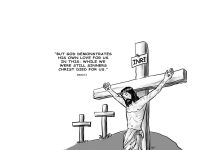[av_one_full first min_height=” vertical_alignment=” space=” custom_margin=” margin=’0px’ padding=’0px’ border=” border_color=” radius=’0px’ background_color=” src=” background_position=’top left’ background_repeat=’no-repeat’ animation=”]
[av_heading heading=’MY LIFE AS ART ‘ tag=’h3′ style=’blockquote modern-quote’ size=’30’ subheading_active=’subheading_below’ subheading_size=’15’ padding=’10’ color=” custom_font=”]
BY PETER SOLIS NERY
[/av_heading]
[av_textblock size=” font_color=” color=”]
Monday. September 18, 2017
[/av_textblock]
[av_textblock size=’18’ font_color=” color=”]
Tell me about the first time you met Felino, Alex, Mitch and some other “characters” at the UPV.
I met Felino at the Deriada workshop (1986) when I was a Biology freshman; but since he was a senior in Social Sciences, I really didn’t bond with him until two years later when I became editor-in-chief (1988); and he, my associate editor in Pagbutlak.
I think I also met Alex at that same Deriada workshop, but I couldn’t be sure now. I don’t remember if Alex took his undergrad at UPV. The next time I really bonded with Alex was around 1999/2000 when we were doing the literary caravan with the UPV people.
Mitch was my classmate in at least two general subjects in the first sem of freshman year. He’s in the Math department, I was in Biology. He belonged to the Bacolod clique with Felino, Roger Marapo, etc. We weren’t really close until maybe our senior year when I was Chairman of the student council, and Mitch could have been the governor or something for the Elektrons/Math department.
I was not into any particular group in college. As a Bio Sci student, I was also transcendent in the sense that I was with Teatro Amakan (2nd year), Pagbutlak (3rd year), and Student Council (4th year). I didn’t really go out of my way to make friends in college. I just tried to be popular, and took care of those who endeared themselves to me.
Relationships in college? With whom and how?
Nada. I had a crush on a boy in my boarding house, but the gay landlord was f*cking him; so I just died with longing all those four years. Haha.
Major issues you confronted in college and with family at the time.
Mainly, financial issues. In my senior year, three of us, siblings, were in college; so that was hard for the family. That’s why I took on a part-time job at the streetchildren program. In school, I was doing pretty well since I was very smart and studious.
Near graduation issues: at home, academics, relationships, coming out, etc.
The biggest tragedy was the fire that burned our house in Dumangas to the ground. Since we were poor, the house wasn’t insured. It was very hard financially; but in a way, such tragedy brought the family closer; and us, children, became more determined to be successful in our studies.
No romantic or gay relationships; so therefore, no need to come out.
Your first serious relationship. How did that bloom — and failed?
Randy, who became my husband, was my first relationship. We were together for eight years, and married for six of those. And you wished I were a slut, but I was not. Haha.
Your teaching years. Did they, in any way, impact your writing/creative life? How?
No obvious impact. But being with young people made me an “eternal child”, like a Peter Pan. And I wanted to be the Pied Piper, too; so while teaching, I really made an effort to understand the culture of the young people. Their music, their drama, their styles. All that is like research and resource material for my writing.
Your first major award: the circumstances and issues that propelled its creation.
The CCP Literature Grant for Hiligaynon Poetry (1992) is my first major literary award. It was for a poetry collection called “Mga Ambahanon kag Pangamuyo sang Bata nga Nalimtan sa Wayang”. It seemed rather obvious that because I worked with streetchildren from 1988-1991, and I’m a Biology graduate (UPV, 1990), my subject for this volume was children and ecology. By that time, I had also already written my first book, “I Flew a Kite for Pepe” (c.1990), but the book didn’t see print until 1993.
Which work/s, old and new, you hold most dear? Why?
Probably, “Lirio” and “Si Padre Olan kag ang Dios”. Both are Palanca first prize winners, and both got critical praise, which I actually heard, from writer-judges who I truly respected. Rosario “Chari” Lucero, who judged “Lirio” (1998), said that it was the most successful Hiligaynon surrealist story she has ever read. Leo Deriada judged “Si Padre Olan” (2013), and said that it was a perfectly plotted story. I heard rumors that one of his proteges cried because Deriada declared my winning story as “perfectly written.”
Just because my play “The Passion of Jovita Fuentes” opened the gates for me to write and compete in the English categories of the Palanca, I kinda hold it dear, too. Winning the Palanca first prize, the play slapped the faces, so to speak, of the judges of the 2007 NCCA Writer’s Prize who maliciously snubbed the play in the original Hiligaynon (“Duha ka Gugma ni Jovita Fuentes”).
Your major influences, how and why.
The Little Prince, my most favorite book next to the Bible. I like the romantic parable, and I always remember it when I try to write a story.
I also like the lyric poetry of the women poets of the Heian Period. I’m partial to haiku and short poetry forms. I like how worlds can be ordered and rendered in three (haiku) or five (tanka) lines. I always strive for that conciseness in my work. (500tinaga@gmail.com/PN)
[/av_textblock]
[/av_one_full]







